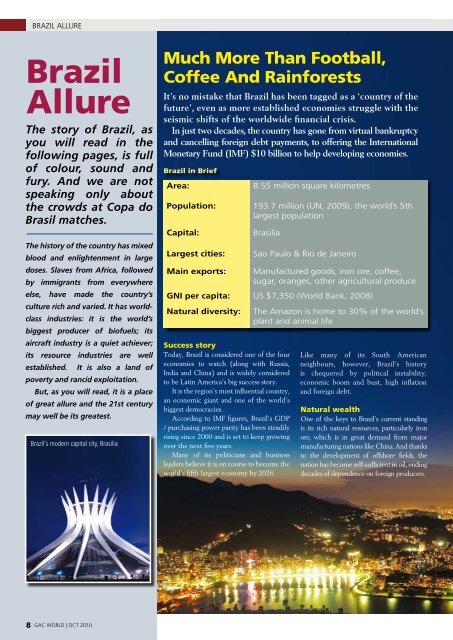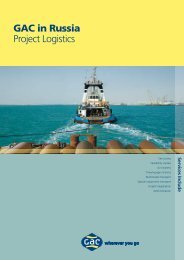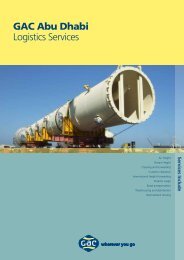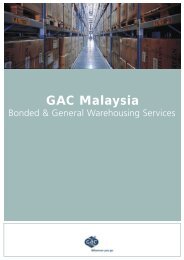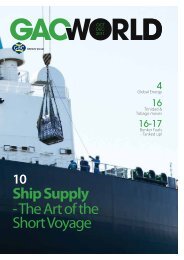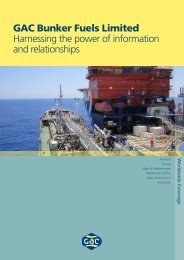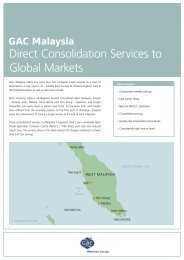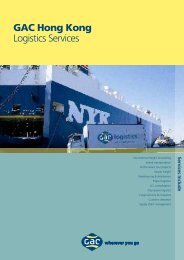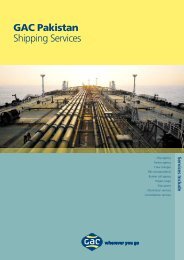GAC World No 4
GAC World No 4
GAC World No 4
You also want an ePaper? Increase the reach of your titles
YUMPU automatically turns print PDFs into web optimized ePapers that Google loves.
BRAZIL ALLURE<br />
Brazil<br />
Allure<br />
The story of Brazil, as<br />
you will read in the<br />
following pages, is full<br />
of colour, sound and<br />
fury. And we are not<br />
speaking only about<br />
the crowds at Copa do<br />
Brasil matches.<br />
The history of the country has mixed<br />
blood and enlightenment in large<br />
doses. Slaves from Africa, followed<br />
by immigrants from everywhere<br />
else, have made the country’s<br />
culture rich and varied. It has worldclass<br />
industries: it is the world’s<br />
biggest producer of biofuels; its<br />
aircraft industry is a quiet achiever;<br />
its resource industries are well<br />
established. It is also a land of<br />
poverty and rancid exploitation.<br />
But, as you will read, it is a place<br />
of great allure and the 21st century<br />
may well be its greatest.<br />
Brazil's modern capital city, Brasilia<br />
Much More Than Football,<br />
Coffee And Rainforests<br />
It’s no mistake that Brazil has been tagged as a ‘country of the<br />
future’, even as more established economies struggle with the<br />
seismic shifts of the worldwide financial crisis.<br />
In just two decades, the country has gone from virtual bankruptcy<br />
and cancelling foreign debt payments, to offering the International<br />
Monetary Fund (IMF) $10 billion to help developing economies.<br />
Brazil in Brief<br />
Area:<br />
Population:<br />
Capital:<br />
Largest cities:<br />
Main exports:<br />
8.55 million square kilometres<br />
193.7 million (UN, 2009), the world’s 5th<br />
largest population<br />
Brasilia<br />
Sao Paulo & Rio de Janeiro<br />
Manufactured goods, iron ore, coffee,<br />
sugar, oranges, other agricultural produce<br />
GNI per capita: US $7,350 (<strong>World</strong> Bank, 2008)<br />
Natural diversity:<br />
Success story<br />
Today, Brazil is considered one of the four<br />
economies to watch (along with Russia,<br />
India and China) and is widely considered<br />
to be Latin America’s big success story.<br />
It is the region’s most influential country,<br />
an economic giant and one of the world’s<br />
biggest democracies.<br />
According to IMF figures, Brazil’s GDP<br />
/ purchasing power parity has been steadily<br />
rising since 2000 and is set to keep growing<br />
over the next five years.<br />
Many of its politicians and business<br />
leaders believe it is on course to become the<br />
world’s fifth largest economy by 2026.<br />
The Amazon is home to 30% of the world’s<br />
plant and animal life<br />
Like many of its South American<br />
neighbours, however, Brazil’s history<br />
is chequered by political instability,<br />
economic boom and bust, high inflation<br />
and foreign debt.<br />
Natural wealth<br />
One of the keys to Brazil’s current standing<br />
is its rich natural resources, particularly iron<br />
ore, which is in great demand from major<br />
manufacturing nations like China. And thanks<br />
to the development of offshore fields, the<br />
nation has become self-sufficient in oil, ending<br />
decades of dependence on foreign producers.<br />
8 <strong>GAC</strong> WORLD | OCT 2010


